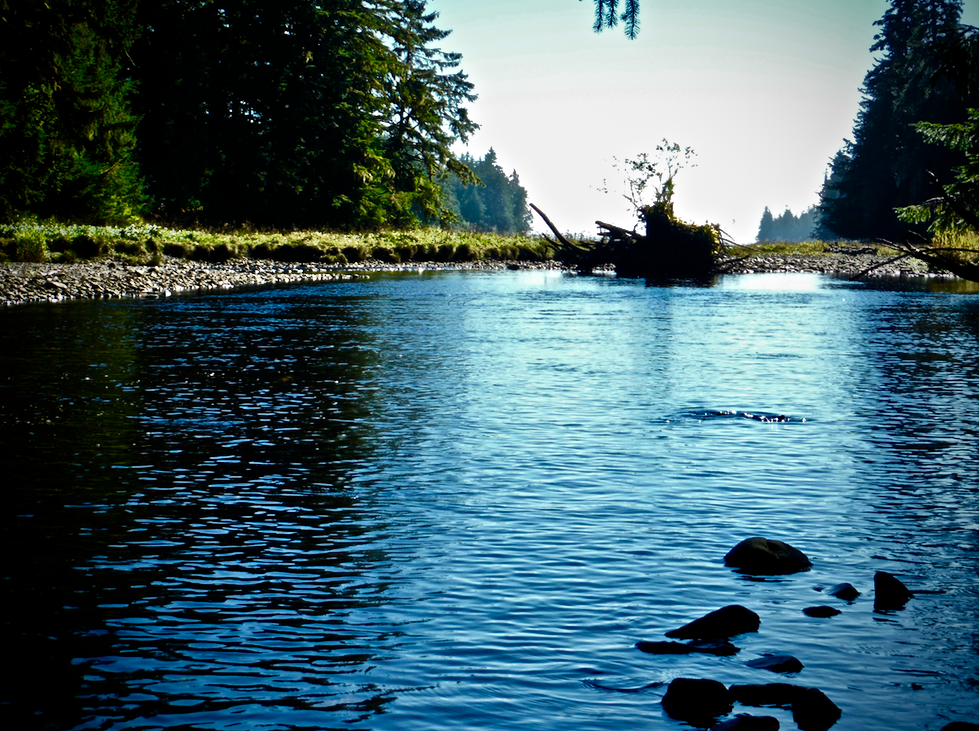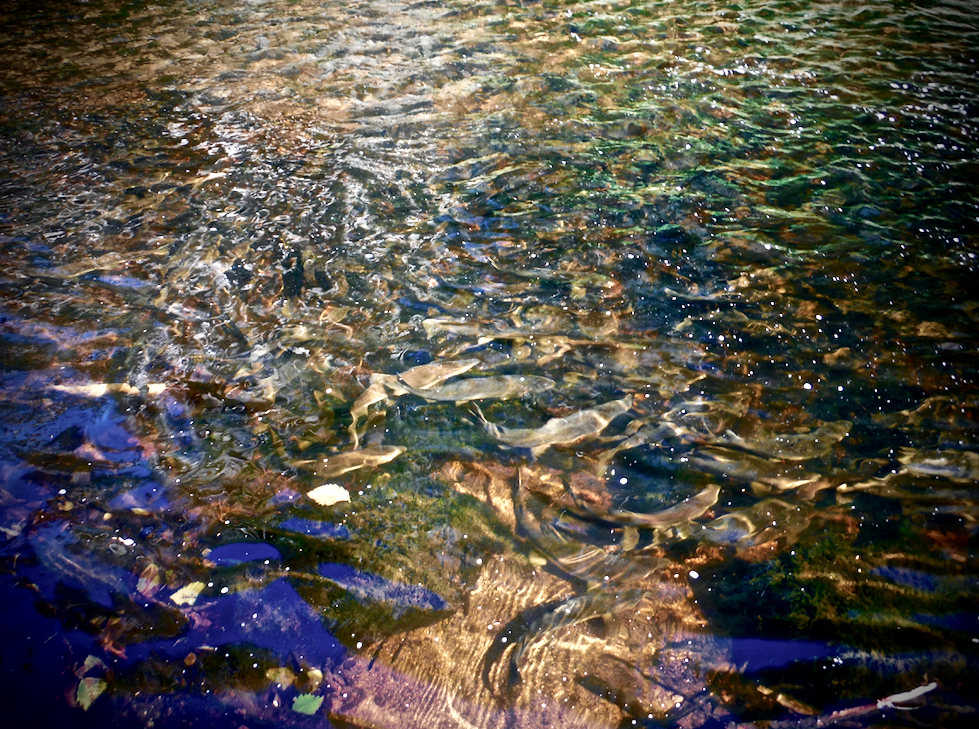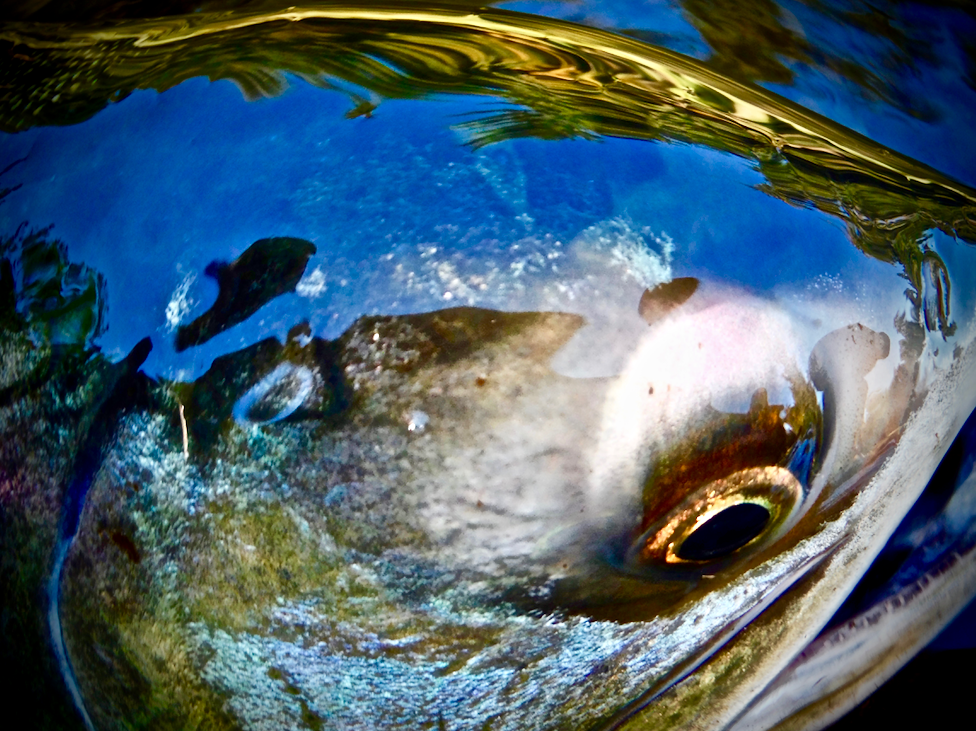By Chris Hunt
The late August rain provided the symphony, a tinny drum beat on the camper’s roof and walls, while I sat at my “kitchen” table tying up a gawdy pink streamer.
Parked beneath the bows of towering yellow cedar and Sitka spruce in a lonely Forest Servi
ce campground on Prince of Wales Island, I waited out the rain at the vise. I’d fired up the generator to give everything a charge, and I had plugged in a movie for some background noise. But I didn’t need it. The rainforest deluge was company enough as I spun bright pink hackle into a workable collar onto a size 4 salmon hook, ahead of a strand of pink chenille and a marabou chaser, complete with some tinsel to add some shine.
I finished the fly and held it up to the light. Not bad. Not bad at all.
The pinks were in. Had been all month, or so I was told. The silvers? Any minute now, the locals said. They were waiting for them, just like I was.
I could be hip-deep in Staney Creek, perfectly dry in my rain gear and casting away, but I was at the end of a three-month adventure that had taken me from Idaho Falls up through Montana, British Columbia, Alberta, the Yukon and finally Alaska. I had topped Attigun Pass earlier in the month, and then worked my way south to Haines, where I put my entire rig on the Alaska Ferry. Two days later, I was on Prince of Wales Island with eight days to kill. And I was tired. Deep-down tired. Bone tired.
I just didn’t want to fish in a downpour. It was tying weather. And nap weather. Nothing puts you to sleep like the steady white noise of a rainstorm in the forest. I hadn’t slept that well in weeks. I think, too, like the bears that I shared the rainforest streams with, I could sense the end of the season of gluttony. It was winding down. The days were getting shorter. There was a noticeable chill in the woods. Occasionally, I could see my breath in the temperate air. Hibernation approached.

But there were still fish to be caught, and when the ceiling lifted a bit and the rain stopped, I stepped outside under the camper’s awning and slipped my waders on. I shouldered my favorite 7-weight and started down a bear trail to the tea-stained creek. Even running high with a fresh flush of rain, I could hear the pinks charging upstream through a chute that plunges between a pair of big karst boulders as I neared the creek. The day before, I watched a mother black bear teach her two cubs to fish at that spot. She sat in the water up to her neck and just slowly lifted her paws up toward the surface. When an unlucky humpy swam over her paws, she’d dunk her head and come up with a fish. The cubs, anxious to eat and not paying me any mind, eagerly charged to the water’s edge and relieved their mother of her catch.
The bears weren’t at the chute this day, but the humpies were staged below it by the thousands. Through polarized lenses, I glared into the school of pinks finning in the pool below the fast water, looking for something out of place … something different. It took me a while, but, now and then, I’d see a fish that was quite a bit bigger. Then I’d see two, sometimes three.
Cohos. The silvers were coming in. Maybe the day of rain pushed them put the from the salt. Or maybe it was just time.
I backed off the creek, and followed the bear trail downstream about a 100 yards to a place where, the day before I was able to cross the stream without getting my hips wet. As I trudged across, the water was well over my waist. Rather than worry too much about the water, my thoughts went immediately to my gear.
I’m going to need some weight, I thought, initiating a conversation with myself. I need to get the fly down a bit today. Maybe the sink-tip? No, that’s overkill. Split shot? How about one of those conehead flies I tied? Yeah. That’s it.
When you spend the better part of three months alone, the voice in your head becomes pretty familiar.

The conehead streamer it was.
Pink salmon are a lot of fun. They’ll chase flies when the mood strikes them, and they’re willing fighters. But they’re not silvers. Not even close. Cohos aren’t just in a different weight class, they fight like they belong in the octagon. And, I fish silvers with a purpose. They’re my favorite salmon to actually eat. And, over the last 10 weeks or so, I only kept a handful of fish to eat—I gobbled down a couple of grayling above the Arctic Circle, just to say I’d tried them, and I fileted a pike I caught in a little froggy pond near the town of Tok just as I entered Alaska. But silvers? A limit of fish on ice would make it home for the freezer, and I could enjoy salmon all winter long.
After a couple of casts through the thick school of fish, I managed to hook a pink that took the fly and then ran off downstream, giving up after just a minute or two. I managed two more humpies on the fly and started thinking that the silvers were more interested in moving up then they were in chasing a my streamer.
And then a Maserati took the streamer and my reel started to scream. My line sliced through the school of fish, scattering 4-pound humpies like flock-shot quail. Then, as my fly line hummed through the water in front of me, a massive silver took flight from the creek a good 20 yards upstream. The conehead streamer was stuck tight in the fish’s jaws, and then I heard the audible snap. My line went slack. The coho jumped two more times on its way upstream, and then the rainforest was quiet, save for the occasional splash from the migrating salmon.
I remember falling to me knees, disappointed and frustrated that I hadn’t checked the tippet (and I’m not sure if it would have mattered, honestly). I stared up at the slate-gray sky and then focused back in on the water. I reached for my fly box, and pinched another conehead streamer from the foam.
You idiot, the voice said to me.
Why don’t you just shut the hell up? I retorted. I looked at the tag end of tippet. No curlies. Just a straight break. I rerigged.
I cast again. I was getting hungry.
Chris Hunt is the national digital director for Trout Media. He lives and works in Idaho Falls.



